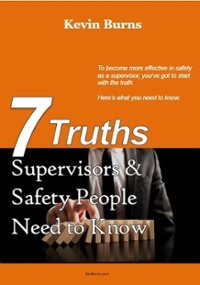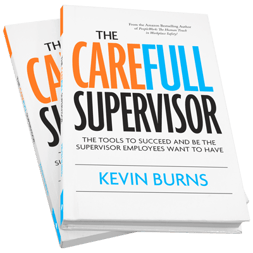To improve employee participation in the safety program, clear communications are key.
If you are going to communicate something in safety, what do you want to have happen? How exactly do you want your people to participate?
Informing people isn’t enough anymore. Your people are already bombarded with, on average, four thousand marketing messages each day. Everywhere they look, they are getting access to another message – competing with your safety message - even as recently as this morning.
But let's say that you are above-average in compelling and engaging your people’s attention during a morning safety meeting, as soon as they leave the meeting, they are faced with hundreds more messages that all compete for attention. So, to combat this, you have to be clear.
The one question
There is only one clarifying question that you must answer as a supervisor, a manager, safety person or even member of the safety committee. That clarifying question is: What do you want your people to do with the information that you give them?
The purpose of this question is to make it abundantly clear why this information is important and what you want your people to do with it. There must be a purpose to the communication. To engage your people into participation, you must be specific about what you want them to do with the information.
If you were to measure what you will present at your next safety meeting against the clarifying question, don’t be surprised if over half of what you are going to say doesn’t pass this test.
Are you needlessly confusing them?
Pointless extra communications confuse our people. When you add charts and graphs and TRIF rates and LTI scores and section and subsection numbers from safety legislation to your presentation, it adds to the confusion. It forces your people to have to work hard to separate what they think is most important from all of the other words and visuals. It's confusing. Confusion causes hesitance. When people hesitate to participate, it leaves supervisors and managers wondering why their safety program is not getting the participation it should.
Every new utterance, every new element and every new visual aid competes for space and attention in the minds of employees. They are not capable of remembering everything and then practicing critical thinking to separate the most important from the merely urgent. They will be able to recall some of it, but certainly not all of it.
Communicate the expectations
 If you have failed to communicate the expectation of how they are supposed to participate, don’t be surprised if they don’t.
If you have failed to communicate the expectation of how they are supposed to participate, don’t be surprised if they don’t.
To communicate effectively and to be able to cut through the clutter of outside messages, make your point of why this particular communication is important and what specifically you want your people to do with the information. Then tell your people exactly how you want them to participate.
One of the key responsibilities you have is to protect your people from information overload. While at the same time, asking for their participation. If you don't ask, don't just expect it to happen. Make your safety communications count. Ask for their participation and outline exactly what you want them to do. Follow this strategy and little by little, you will begin to see the level of participation in your safety program grow.
--
Learn more strategies to create high-participation in the safety program. Put Kevin Burns' expertise to work in your organization. Whether it's for a one-day safety event or training/facilitation session, or perhaps Kevin's 90-Day Safety Accelerator program and the High-Participation Culture Shift program, there is a program that can work for you, your front-line crews, your management team, your safety committee and your supervisors.
Kevin Burns is a management consultant, speaker/facilitator and author of PeopleWork: The Human Touch in Workplace Safety. He is an expert in how to engage people in safety and believes that the best place to work is always the safest place to work.
Get details and more information http://www.kevburns.com/contact


